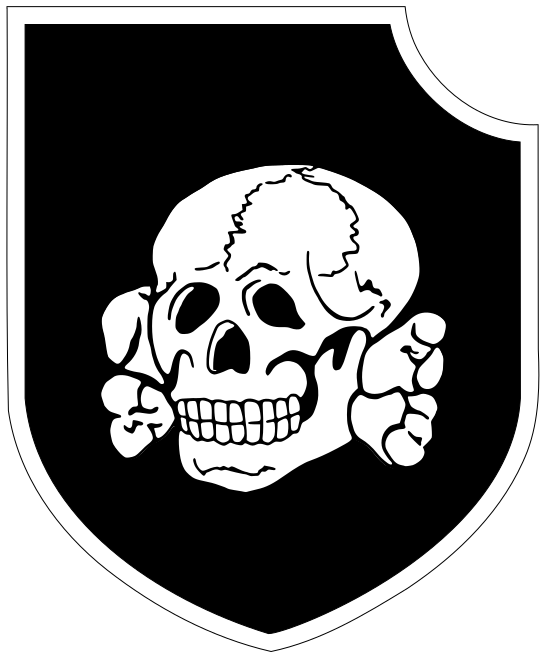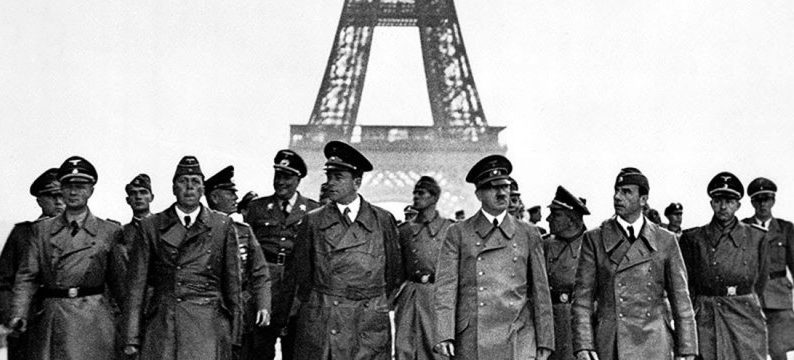Waffen SS.

The Waffen-SS, Armed SS) was the armed wing of the Nazi Party’s SS organisation. Its formations included men from Nazi Germany, along with volunteers and conscripts from both occupied and un-occupied lands.
The Waffen-SS grew from three regiments to over 38 divisions during World War Ii, and served alongside the Heer (regular army), Ordnungspolizei (uniformed police) and other security units. Prior to the war, it was under the control of the SS Führungshauptamt (SS operational command office) und SS Obergruppenführer Hans Jüttner 
 , beneath Reichsführer-SS Heinrich Himmler. Jüttner died age 71 on 24-05-1965 in Bad Tölz.
, beneath Reichsführer-SS Heinrich Himmler. Jüttner died age 71 on 24-05-1965 in Bad Tölz.
With the start of World War II, tactical control was exercised by the High Command of the Armed Forces (OKW), with some units being subordinated to Kommandostab Reichsführer-SS (Command Staff Reichsführer-SS) directly under Himmler’s control.
Initially, in keeping with the racial policy of Nazi Germany, membership was only open to people of Germanic origin (so-called Aryan ancestry. The rules were partially relaxed in 1940, and later the formation of units composed largely or solely of foreign volunteers and conscripts was authorised.  These SS units were made up of men mainly from among the nationals of Nazi occupied Europe.
These SS units were made up of men mainly from among the nationals of Nazi occupied Europe.
At the post-war Nuremberg trials the Waffen-SS was judged to be a criminal organisation due to its connection to the Nazi Party and involvement in numerous war crimes and crimes against humanity. Former Waffen-SS members were denied many of the rights afforded to the military veterans. An exception was made for Waffen-SS conscripts, who were exempted because they were not volunteers. About a third of the total membership were conscripts.
Himmler’s military formations at the outbreak of the war comprised several subgroups which would become the basis of the Waffen-SS.
- The Leibstandarte SS Adolf Hitler (LSSAH), under then Obergruppenführer Josef “Sepp” Dietrich.
- The Inspectorate of Verfügungstruppe (SS-VT), under Gruppenführer Paul “Papa” Hausser, which commanded the Deutschland, Germania and Der Führer regiments. The latter was recruited in Austria after the Anschluss and was not yet combat-ready.
- The Inspectorate of Concentration Camps, under Gruppenführer Theodore Eicke, which fielded four infantry and one cavalry Death’s Head Standarten
 , comprising camp guards of the SS-Totenkopfverbände (SS-TV). These troops wore the SS-TV skull and crossbones rather than the SS-VT “SS” runes.
, comprising camp guards of the SS-Totenkopfverbände (SS-TV). These troops wore the SS-TV skull and crossbones rather than the SS-VT “SS” runes. - Police units of Obergruppenführer und General der Polizei Kurt Daluege’s
 Ordnungspolizei which reported to Himmler in his capacity as Chief of German Police. These troops used police ranks and insignia rather than those of the SS. Daluege was hanged in Pankác prison in Praque on 24-10-1946, age 49.
Ordnungspolizei which reported to Himmler in his capacity as Chief of German Police. These troops used police ranks and insignia rather than those of the SS. Daluege was hanged in Pankác prison in Praque on 24-10-1946, age 49. - Military historian estimates that the Waffen-SS suffered 314,000 dead. Casualty rates were not significantly higher than in the Wehrmacht overall and were comparative to those among the Heer armoured divisions and the Luftwaffe paratroop formations












Leave a Reply